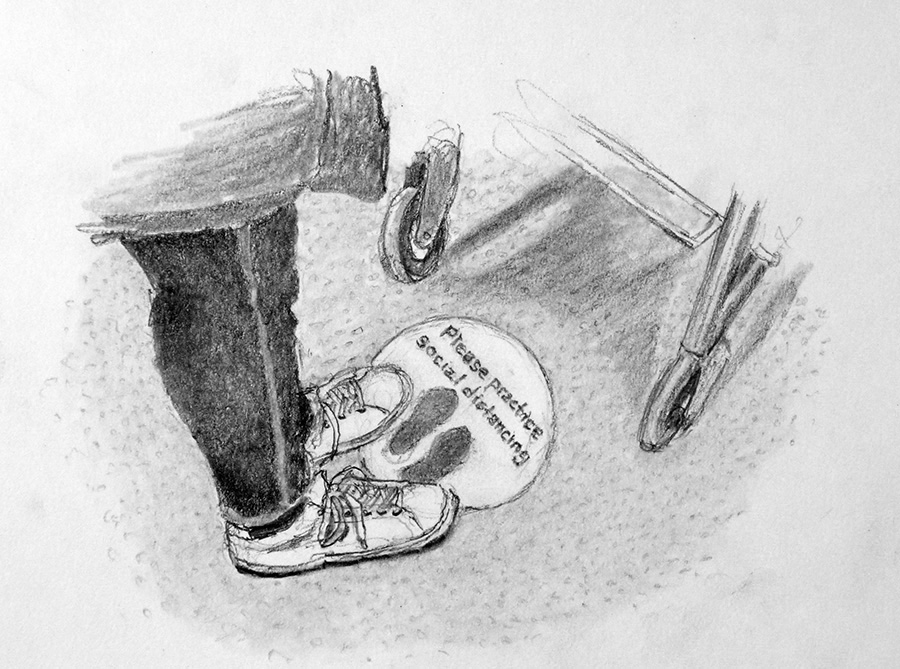
Social distancing: the buzzword of the new pandemic society – a directive to maintain a minimum of six feet between people in public, a distance judged sufficient to prevent easy transmission of COVID-19. At the supermarket, new systems of entering/exiting and queue-forming take shape: a line to get in (to maintain capacity limits), an obligatory spritz of hand sanitizer, traffic routed in one direction (no turning back!). Shopping, under these conditions, becomes a slightly desperate game of pseudo-polite hording as supplies are limited and random food shortages flare up mysteriously. Furtive, evasive and slightly guilty eye movements characterize encounters in supermarkets, as people try their best to maintain a veneer of normalcy under a darkening cloud of fear. I navigate the aisles of my local supermarket with a mixture of exaggerated politeness and suspicion: is it wrong of me to take two of these? But the person ahead of me took four! The introduction of a clear plastic screen in front of the cashier, meanwhile, shifts the emphasis from customer service to protection from the customer (and rightly so: what is a short, isolated encounter for the customer is one of dozens if not hundreds of similar encounters throughout the cashier’s day, all of which mean potential virus exposure). But this physical barrier has the effect of eroding the trust that underlies the most basic form of transaction. Like the customer who suddenly discovers she’s being filmed on CCTV, the notion that one is inherently suspect creeps in, undermines the geniality of the exchange.
Leave a comment